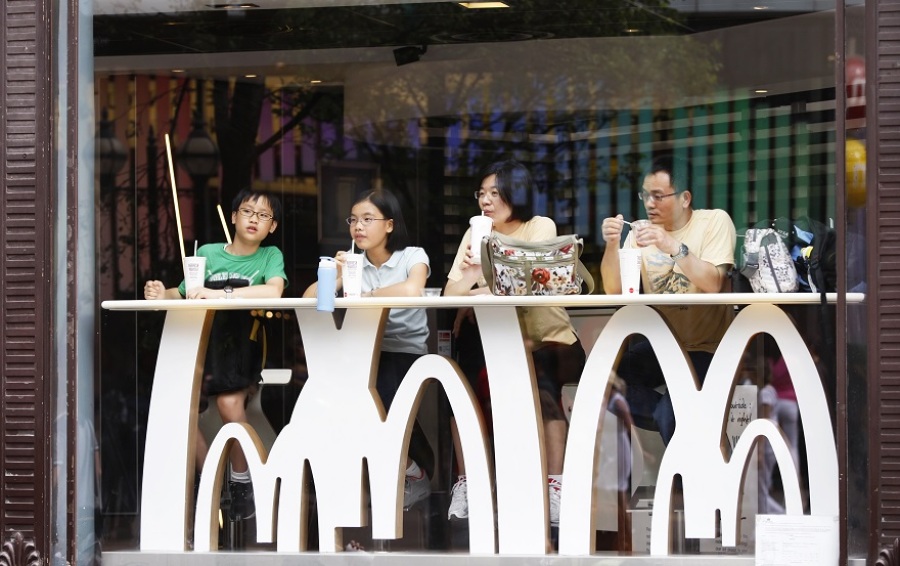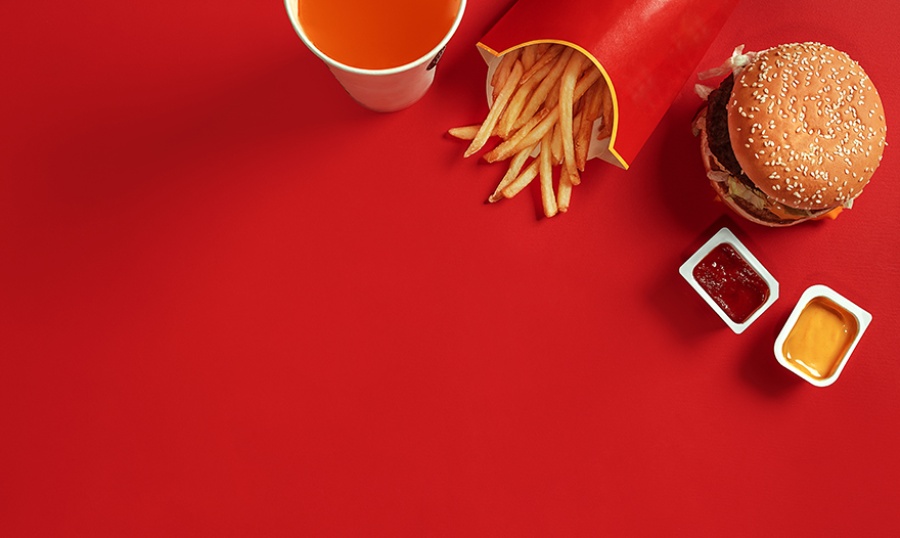
🕒 Estimated reading time: 11 min.
No matter where you live in the world, chances are you have heard of or eaten in a McDonald's fast food restaurant. The chain has been loved and loathed – it has suffered from boycotts, riots and decade-long legal battles. Possibly no other food brand has divided people quite so fiercely. But four decades on from opening in Europe, chances are that you have had a McDonald’s meal in the past or if not, you certainly know a lot of people who have. It’s the biggest fast food chain in the world, with 32,000 outlets in 117 countries.
The clown-fronted burger outfit employs a staggering 1.7 million people, and in the first three months of 2011 alone it made $1.2bn in profits on the back of revenues of $6.1bn. The company has come in for huge amounts of criticism over the past 20 years, for the impact it has on the diets of people worldwide, its labour practices and the impact its business has had on the environment. From Fast Food Nation to Supersize Me by the way of the McLibel trials of the 1990s, plenty has been written and broadcast to tarnish the golden arches’ shine.
Its survival, in spite – and partly because – of the food revolution that has taken place over the last two generations and while McDonald's was not the first franchise business, it has possibly become the best example of the business model. The first McDonald’s in the UK opened in Powis St, Woolwich in south east London in 1974. The first McDonald’s opened in Ireland on Grafton Street in May 1977 and along the way, they’ve managed not just to live history, but create it: from the first drive-thru restaurant in Europe, to the first McCafé in Europe.
So how did the chain grow from a single restaurant into the expansive corporation it is today? It's not a question that has a concise answer because McDonald's is first-class in every segment of its operation. With that in mind, this article focuses on three of the characteristics which stand out when speaking about McDonald's success: consistency, innovation and resiliency.
<div class="_form_9"></div><script src="https://franchisedirect52345.activehosted.com/f/embed.php?id=9" type="text/javascript" charset="utf-8"></script>
A History
When the McDonald brothers, Dick and Mac opened their first restaurant in 1940 in San Bernardino, California, they could never have imagined the phenomenal growth that their company would enjoy. From extremely modest beginnings, they hit on a winning formula selling a high quality product cheaply and quickly. However, it was not until Ray Kroc, a Chicago based salesman with a flair for marketing, became involved that the business really started to grow. He realised that the same successful McDonald's formula could be exploited throughout the United States and beyond.
In 1955, Ray Kroc realised that the key to success was rapid expansion. The best way to achieve this was through offering franchises. Today, over 70 percent of McDonald's restaurants are run on this basis. In the UK, the first franchised restaurant opened in 1986 – there are now over 1,200 restaurants, employing more than 70,000 people, of which 34 percent are operated by franchisees. There are 73 McDonald's franchisees operating in Ireland.
Consistency
It doesn't matter if you're visiting a McDonald's in London or Lima, in Dublin or Dubai – you're going to have a similar experience wherever you are. This highlights Ray Kroc's vision for McDonald's from the very beginning.
“Quality, Service, Cleanliness and Value” was Kroc's motto. His belief in this motto was so strong he went on to found a training school, Hamburger University, in 1961 where the curriculum is based upon the four concepts, as well as lessons he had learned from his initial years in operating the franchise. Consistency, of course, is the lynchpin of any franchise system and Hamburger University has systematically taught future franchisees how to run a McDonald's restaurant the way Ray Kroc envisioned since its opening over 50 years ago.
Customers know what to expect and can rely on that knowledge when making a decision on where to eat. These efforts towards process repetition and efficiency not only set the basis for McDonald's success from the standpoint of customers' expectations, but also help McDonald's stay on top in a culture where producing at a quick pace is commonly expected.
Innovation
At first, the characteristics of consistency and innovation seem to contradict one another. But in fact, they work together to allow for McDonald's continued growth.
Staying consistent with the core components of your business doesn't mean the products you sell, or even the way you deliver them, have to stay the same. With a solid foundation and established processes, you can tweak your product without causing disruptions to better serve your customers. Innovation stemming from responsiveness to customers and franchisees has played a big role in McDonald's fending off stagnation over the years.
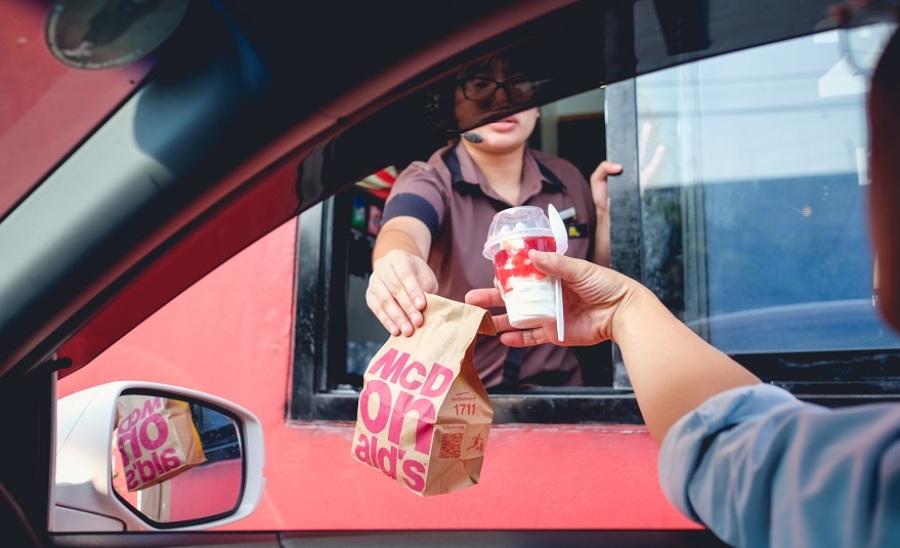
For example, in 1975 a group of potential McDonald’s customers had a problem: at that time, soldiers in a certain locale weren't permitted to get out of their cars while wearing their fatigues. After learning of this problem, McDonald's came up with a solution: add a drive-thru. The first McDonald's drive-thru was located near military base Fort Huachuca in Sierra Vista, Arizona to serve the soldiers with additional drive-thru locations in Georgia and Oklahoma City soon following.
Consumer tastes change over time and a company needs to respond to these changes. Innovation injects dynamism and allows the firm to exploit markets previously overlooked or ignored. The introduction of the Egg McMuffin in 1971, for example, enabled McDonald's to cater initially for the breakfast trade. Filet-o-Fish, Drive-thru's and Playlands were all products or concepts developed by franchisees.
These menu innovations (along with items developed in their test kitchen) have allowed for McDonald's to hold product offerings for all meal times, and the snack periods that fall in between, allowing for greater profitability. But McDonald's takes great care not to effect the consumer experience when a new item is introduced. As then-CEO James Skinner said in a 2010 interview with CNBC, “[McDonald's doesn't] put something on the menu until it can be produced at the speed of McDonald's.”
Resiliency
But perhaps the biggest reason McDonald’s has been a success for so long is its ability to weather storms.
McDonald’s image problem in the late 1990s and early 2000s, a traumatic time for the company crystallised in Morgan Spurlock’s highly entertaining film Super Size Me, which portrayed the company as the source of some of the world’s worst ills – including obesity, animal cruelty and employee exploitation.
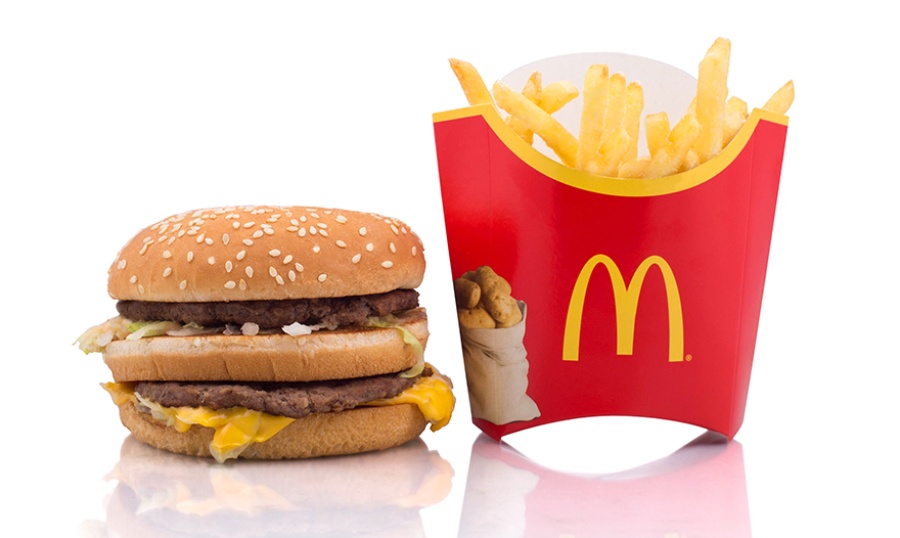
In the era of Delia, Jamie and Nigella and with the rise of organic food, McDonald’s became a symbol for the worst of American excess. In Britain, many towns fought determined battles to stop McDonald’s opening branches. Hampstead in north London was possibly the most aggressive and Temple Bar in Dublin resisted the branch for years. But since then it has flourished around the world after it refreshed its food offering and its restaurants. Its “value menus” have been big hits with recession-hit consumers.
McDonald’s has had many lawsuits directed at them for various issues, and has been the subject of a large amount of negative press. What does McDonald's do combat this negativity? From an outside perspective, it appears that at least part of their strategy entails acknowledging the concern or issue, and then dedicating resources in-house to staying on top of the issue as the following examples illustrate.
Example 1:
Many of the challenges McDonald's has faced over the years are related to health concerns, particularly related to children. In response to these concerns, McDonald's formed the Global Advisory Council (GAC) in 2004. The GAC is an international team of independent experts assembled by McDonald's to provide us with professional guidance in the areas of nutrition and children's well-being.
Several additions to their menu items have come in answer to critics' and consumers' desire for healthier choices. Some examples of these choices include an increased variety of salads, fruit and maple oatmeal, and the option of being able to order a Happy Meal with apple dippers and apple juice or 1% low-fat milk as the drink. In addition, McDonald's was one of the first fast food restaurants to provide nutrition facts on their packaging, beginning in 2006.
Example 2:
When it comes to sustainable environmental practices, activists have been raising concerns over McDonald's policies for decades.
In the mid-1980s, McDonald's began facing one of its staunchest challengers in the activist group London Greenpeace (not affiliated with the international Greenpeace organisation). In a leaflet entitled “What's Wrong with McDonald's?” the group alleged that the food that McDonald's served was bad for people's health and that actions used to produce their food products and packaging contributes to the destruction of rainforests, among other things.
In response, McDonald's formally established a Global Environmental Commitment in 1990 that outlines the steps they have taken to reduce solid waste, conserve and protect natural resources, along with encouraging others to be accountable for their actions.
One of results of this commitment is that currently 82% of McDonald's consumer packaging is made from renewable materials. But, McDonald's did take a big PR hit through the actions of members of the London Greenpeace group that is well documented by the “McLibel” case and subsequent accounts of the litigation.
Maintaining Goodwill
How can McDonald's turn these tribulations into bumps in the road instead of them have a devastating impact on business? Part of the reason McDonald's can be resilient when they are challenged is an established rapport within the community. When controversies arise, having goodwill with consumers can help any company weather the storm. Ways McDonald's cultivates goodwill with consumers include their involvement in youth sports programs and charity programs such as Ronald McDonald House charities.
In the Ronald McDonald House, families from all over Ireland avail of modern, comfortable long stay accommodation, while their children are receiving treatment for serious illnesses such as cancer and leukaemia. For these families, the accommodation units are vital in helping them establish a home from home for what can be the most stressful time of their lives. The house is owned and run by The Ronald McDonald House Charity Ireland. With annual running costs of approximately €300,000, over 65% of funding comes through McDonald’s in the form of donations by customers, as well as owners of McDonald’s restaurants and their suppliers.
Meanwhile in the UK, McDonald’s is the Community Partner of the four nations football associations. This means we work with local football clubs, schools, youth teams and junior leagues around the UK. Our programme gives people the chance to volunteer and qualify as a football coach so they can give free, high-quality coaching to young people across the country.
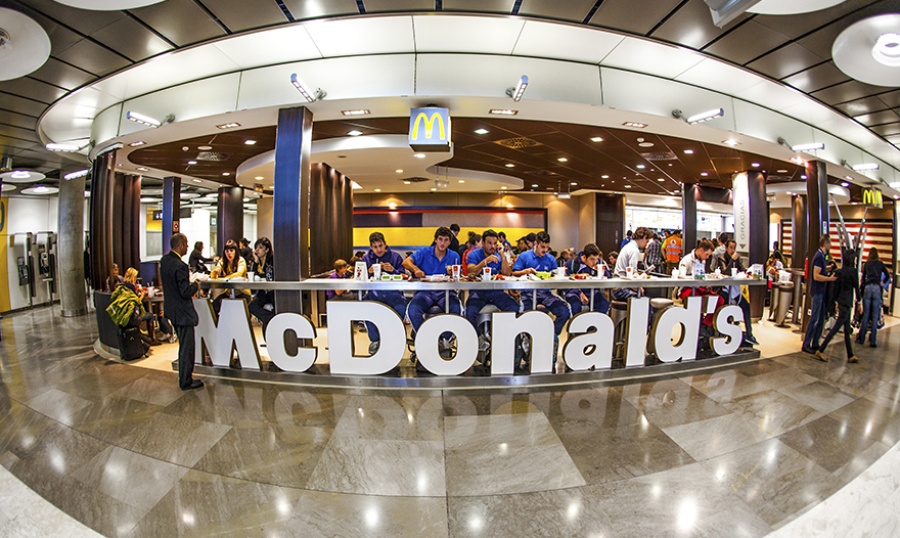
Present Day Challenges and Actions
Declining sales in the early 2000s, which saw franchises being shut for the first time in the company’s history, caused a major rethink of te way McDonald’s operates, and its recent rhetoric has been that of a firm with a newly discovered zeal for ethical end eco-friendly practices, garnering praise from champions as unlikely as Greenpeace and the Carbon Trust. But is this just marketing hype or has McDonald’s had a genuine change of heart?
The UK and Irish branches have committed to a number of initiatives to improve its image, running an aggressive marketing campaign at the same time to portray itself as an ethical employer which is both farmer and eco-friendly. It has also moved to become more transparent, putting ingredients lists for all of its products on its website and setting up another website, Make Up Your Own Mind, inviting customers to voice concerns and publishing accounts of critics’ visits to its production sites.
McDonald’s wasn’t involved in the horse meat scandal and ever since the early 2000s, McDonald’s UK has maintained that none of its beef, bacon or chicken is fed genetically modified grain. Farmers working for McDonald’s have independently confirmed to the Ecologistand Esca that they have a ‘decent’ working relationship with the company.
In 2014, as president of the Sustainable Restaurant Association, Raymond Blanc gave the CEO of McDonald’s UK the Sustainability Hero Award, an honour recognising the chain’s contribution to improving British food. “I was amazed,” he says. “All their eggs are free range; all their pork is free range; all their beef is free range”.
Lessons to be Learned
Very few companies will ever come near the magnitude of operation McDonald's has achieved. But the lessons the corporation showcases are on display to be learned by entrepreneurs striving to make their company the best it can be. The success of McDonald's can be attributed to many more factors that have been discussed in this article, but these are some that have contributed heavily to it.
The takeaways:
- Developing strong, efficient processes and procedures and remaining consistent on them allow for businesses to develop consumer confidence in the brand.
- Having the foundation of consistent processes allows businesses the flexibility to innovate and adapt to consumers' concerns, and improve the brand with minimal disruption.
- Problems and downtimes will happen in business. Having an established rapport with consumers can help businesses be resilient when difficulties arise.
- Listen. Customers know what they want. The main function of a business is to discover these wants and cater to them. When customers are telling you what their desires are, it's an invitation for growth and deepening bonds for the future.
And finally… some Kroc wisdom
Kroc defined salesmanship as “the gentle art of letting the customer have it your way."
- “I was an overnight success all right, but 30 years is a long, long night.”
- “Luck is a dividend of sweat. The more you sweat, the luckier you get.”
